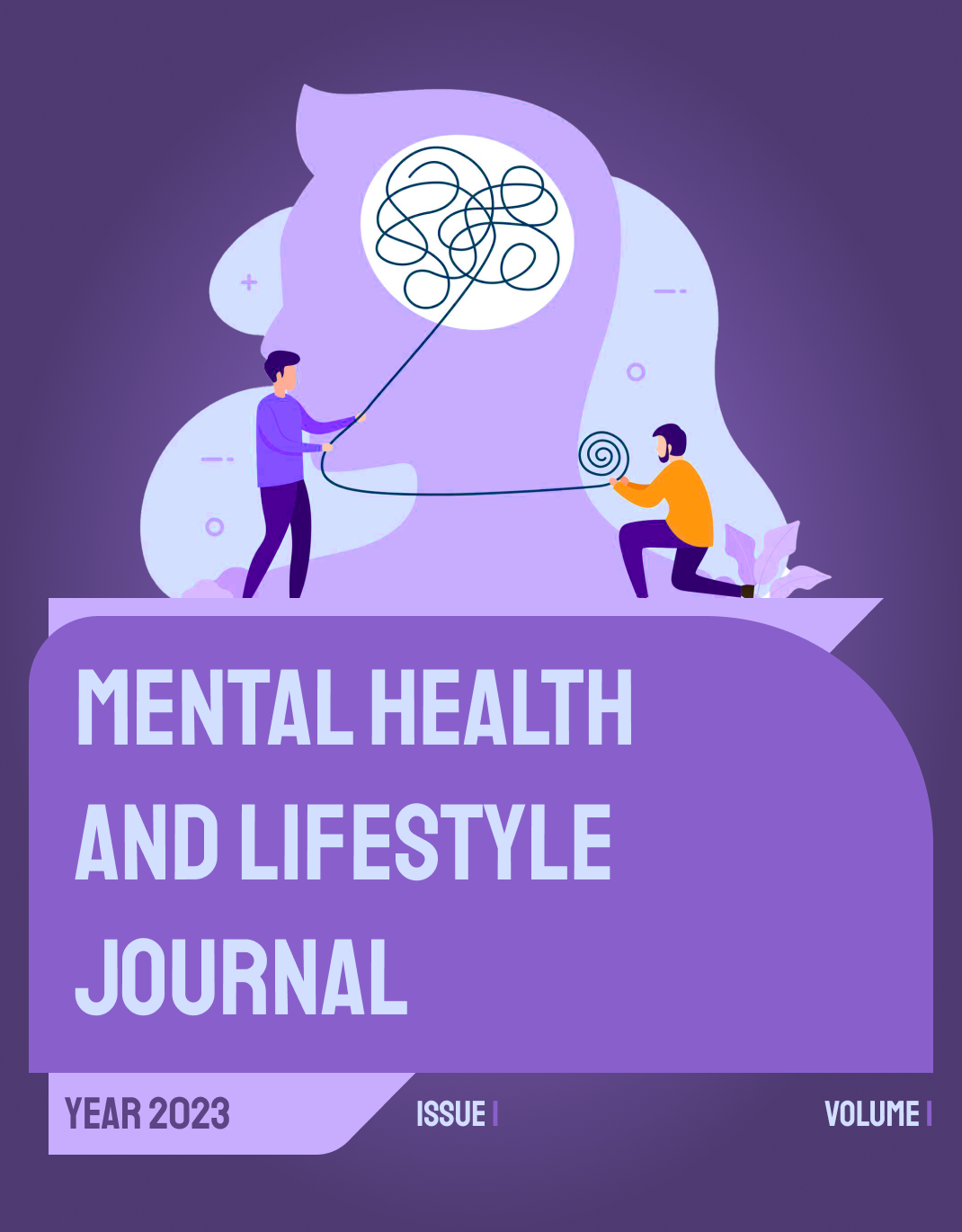Exploring Mental Health Risk Factors Among Digital Content Creators
Keywords:
Digital content creators, mental health, occupational stress, social media platformsAbstract
This study aimed to explore the mental health risk factors experienced by digital content creators, focusing on their occupational, emotional, and social challenges in the context of Tehran, Iran. This qualitative research employed semi-structured interviews with 21 digital content creators residing in Tehran. Participants were selected through purposive sampling and included individuals with at least one year of content creation experience on platforms such as Instagram, TikTok, and YouTube. Interviews were conducted until theoretical saturation was achieved. Data were transcribed verbatim and analyzed using thematic analysis, following Braun and Clarke’s framework. NVivo software was used to assist in coding and theme development. Thematic analysis revealed four major categories of mental health risk factors: occupational stressors, emotional and psychological impact, social and interpersonal challenges, and platform and audience dynamics. Occupational stressors included algorithmic uncertainty, income instability, and burnout. Emotional risks manifested as anxiety, low self-worth, mood fluctuations, and imposter syndrome. Social challenges involved disrupted personal relationships, isolation, and identity conflict. Platform-specific pressures such as audience expectations, content censorship, algorithm dependency, and performance metric obsession were also prominent. Participants frequently reported emotional exhaustion, fear of irrelevance, and a lack of institutional support structures. These stressors were intensified by the absence of formal workplace protections or mental health resources. Digital content creators face a complex intersection of psychological, social, and platform-driven pressures that significantly impact their mental health. The findings highlight the urgent need for systemic recognition of digital labor and the development of targeted mental health interventions, platform governance reforms, and creator-centered support systems.
Downloads
References
1. Westwood H, Tylstedt B, Stein K, Holroyd D. Social Media as a Key Actor in Redefining Healthcare Industry Dynamics. Aoir Selected Papers of Internet Research. 2025. doi: 10.5210/spir.v2024i0.14095.
2. Jia X. The Role of Social Media Messages and Content Creators in Shaping COVID-19 Vaccination Intentions. Frontiers in Digital Health. 2025;7. doi: 10.3389/fdgth.2025.1448884.
3. Kojah SA, Zhang Z, Are C, Delmonaco D, Haimson OL. "Dialing It Back:" Shadowbanning, Invisible Digital Labor, and How Marginalized Content Creators Attempt to Mitigate the Impacts of Opaque Platform Governance. Proceedings of the Acm on Human-Computer Interaction. 2025;9(1):1-22. doi: 10.1145/3701191.
4. Chen W-T, Hsieh MH. Keep the Influencers! Exploring How Sacrifice Enhances “Creator Self-Identity” and Providing Practical Recommendations by the Marketing Mix: An Exploratory Study. Sage Open. 2024;14(4). doi: 10.1177/21582440241290572.
5. Alfathron BS. Social Media and Mental Health. Journal of Psychiatry Psychology and Behavioral Research. 2024;5(2):17-9. doi: 10.21776/ub.jppbr.2024.005.02.4.
6. Xu MM, Scherer E, Robbins R, Liu Y, Motta M, Yarnell A. ‘Influencing the Influencers’: Exploring the Impact of an in-Person Summit on TikTokers’ Mental Health Communication Habits and Beliefs. 2024. doi: 10.31235/osf.io/v83ht.
7. Bonifacio R, Uttarapong J, Jereza R, Wohn DY. Self-Promotion Practices and Context Collapse Management of Adult Content Creators on OnlyFans. Proceedings of the Acm on Human-Computer Interaction. 2025;9(1):1-21. doi: 10.1145/3701206.
8. Ziavras S, Diamantaki K. Hope on YouTube: Mixed Methodology Bridges Mental Health YouTubers and Viewers’ Perspectives. European Conference on Social Media. 2024;11(1):282-91. doi: 10.34190/ecsm.11.1.2063.
9. Alalid RP, Calipayan JA, Yutrago JJS, Sabado RE, Nierves JCT, Palogan ARP, et al. Integration of Educational Content in Social Media Platforms: Content Creators’ Experiences. Salud Ciencia Y Tecnología - Serie De Conferencias. 2025;4:1319. doi: 10.56294/sctconf20251319.
10. Motta M, Liu Y, Brenna K, McLaurin S, Speer K, Scherer E, et al. Assessing the Effect of Evidence-Based Mental Health Social Media Videos on Youth Emotional Support Competencies: A “Creator-Engaged” Approach. 2024. doi: 10.31235/osf.io/kydf4.
11. Liu Y, Motta M, Yarnell A. Training TikTok Creators in Mental Health Communication Benefits Their Audience, Too: An Analysis of TikTok User Comments. 2024. doi: 10.31235/osf.io/p65nv.
12. Aulia R, Setiawan A. Exploring the Relationship Between Social Media Usage and Mental Health Among Adolescents. Ijss. 2024;1(4):01-5. doi: 10.62951/ijss.v1i4.140.
13. Shalaby N. The Role of Social Media Platforms and Online Initiatives in Addressing and Creating Awareness About Mental Health Problems in the Youth and Adult Population. International Neuropsychiatric Disease Journal. 2024;21(1):14-9. doi: 10.9734/indj/2024/v21i1417.
14. Suravanditha K, Magesh P. Exploring Self-Diagnosis Tendencies and Implications for Professional Help-Seeking Among Youth on Instagram. International Journal for Multidisciplinary Research. 2025;7(1). doi: 10.36948/ijfmr.2025.v07i01.37875.
15. Yoon DY, Gil S, Trumbull J, Lim S. TikTok and the Prevalence of Self-Diagnoses and Psychological Disorders Among Teen Users. Journal of Student Research. 2024;13(1). doi: 10.47611/jsrhs.v13i1.6317.
16. Ismed GHM. Pengaruh Konten Kesehatan Mental Pada Media Sosial Terhadap Kejadian Self-Diagnose Di Tengah Masyarakat. Journal of Religion and Film. 2024;3(2):75-84. doi: 10.30631/jrf.v3i2.42.
17. Tera T, Kelvin K, Tobiloba B. Influence of Social Media Campaigns on College Students Mental Health Awareness. 2024. doi: 10.31234/osf.io/a4beh.
18. Jia X, Ahn S, Seelig MI, Morgan SE. The Role of Health Belief Model Constructs and Content Creator Characteristics in Social Media Engagement: Insights From COVID-19 Vaccine Tweets. Healthcare. 2024;12(18):1845. doi: 10.3390/healthcare12181845.
19. Sylvain E, Talpade M. Exploring the Characteristics of Cyberbullied TikTokers Based on Their Ethnicity. International Journal of Arts Humanities & Social Science. 2024;05(06):49-53. doi: 10.56734/ijahss.v5n6a8.
20. Motta M, Liu Y, Yarnell A. “Influencing the Influencers:” a Field Experimental Approach to Promoting Effective Mental Health Communication on TikTok. Scientific Reports. 2024;14(1). doi: 10.1038/s41598-024-56578-1.
21. Islamiati C. Exploration of High School Students Views on the Profession of Content Creator in Social Media. Isc-Beam. 2025;3(1):1704-18. doi: 10.21009/isc-beam.013.131.
22. Chalim A, Rahmah S, Rudiana R, Jasafat J. Digital Da’wah: Effective Strategies in Spreading Islam Through Social Media. J Of Noesantara Islamic Studies. 2025;2(1):33-42. doi: 10.70177/jnis.v2i1.1844.
23. Haris IP, Suryasuciramdhan A, Agustina LF, Al-bana MS. Analisis Isi Video Di Media Sosial Channel Youtube Kinderflix Dalam Kasus Pelecehan. Tuturan Jurnal Ilmu Komunikasi Sosial Dan Humaniora. 2024;2(3):32-41. doi: 10.47861/tuturan.v2i3.1035.
24. Igben HG, Acchugbue OE. Influence of Viral Contents on the Rapid Spread of Information on the Social Media Platforms in Nigeria. British Journal of Marketing Studies. 2024;12(6):24-40. doi: 10.37745/bjms.2013/vol12n62440.
Downloads
Published
Submitted
Revised
Accepted
Issue
Section
License

This work is licensed under a Creative Commons Attribution-NonCommercial 4.0 International License.










